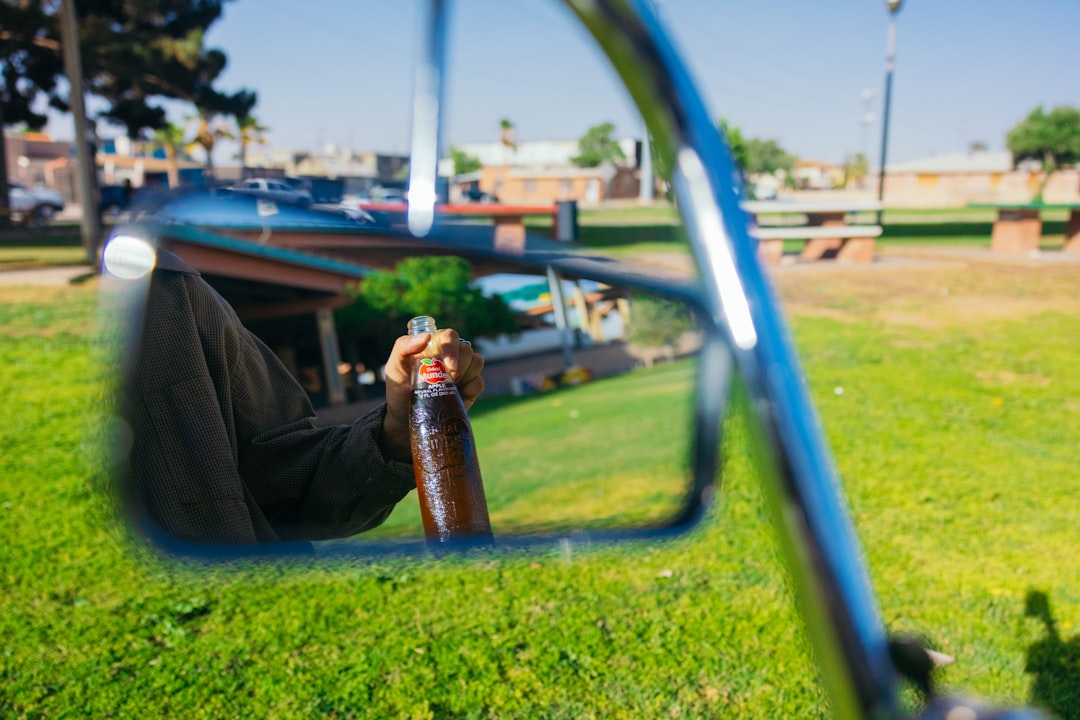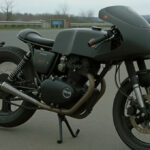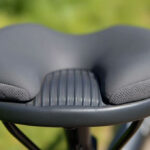The Importance of Bicycle Mirrors
When you’re out on the road, staying safe is a top priority. Bicycle mirrors are an essential tool for enhancing your safety and situational awareness. These mirrors help you keep an eye on what’s happening behind you, offering an extra layer of protection against potential hazards and distractions.
Here’s a quick overview of what you need to know about bicycle mirrors:
- Safety: Keep an eye on approaching vehicles.
- Situational Awareness: Monitor cyclists and pedestrians behind you.
- Types: Choose between handlebar and helmet mirrors for the best fit.
Using a bicycle mirror allows you to steer with confidence, especially in busy urban environments. Whether you opt for a handlebar-mounted mirror or a helmet-mounted one, the added visibility can make a significant difference in your cycling experience. Different setups offer varying advantages and drawbacks, which we’ll explore in this guide to help you make an informed decision.

Key terms for bicycle mirror:
Benefits of Using Bicycle Mirrors
Using a bicycle mirror can significantly improve your cycling experience by providing added protection, improving rear view visibility, reducing distractions, and increasing overall safety.
Added Protection
A bicycle mirror offers an extra layer of protection by allowing you to see what’s happening behind you without turning your head. This is crucial, especially in areas with heavy traffic or where vehicles often share the road with cyclists. By knowing what’s approaching from behind, you can make informed decisions and react promptly to avoid accidents.
Improved Rear View
One of the most significant benefits of using a bicycle mirror is the ability to monitor the rear view. Whether it’s a car, another cyclist, or even a pedestrian, having a clear view of what’s behind you helps in maintaining a safe distance and avoiding sudden surprises. Mirrors designed to give you a broad and clear field of vision ensure you stay aware of your surroundings.
Reducing Distractions
When you ride without a mirror, you often have to turn your head to check for traffic or other hazards. This momentary distraction can be dangerous. By using a bicycle mirror, you can keep your eyes on the road ahead while still being aware of what’s happening behind you. This reduces the risk of accidents caused by sudden distractions.
Improved Safety
Safety is paramount when cycling, and a bicycle mirror is a simple yet effective tool to improve it. Mirrors designed with high-grade optics provide a clear and wide view, ensuring you can see potential hazards well in advance. This early warning system allows you to take precautionary measures, such as adjusting your speed or changing lanes safely.

In summary, using a bicycle mirror offers several benefits that can greatly improve your cycling safety and experience. From added protection and improved rear view to reducing distractions and enhancing overall safety, a bicycle mirror is a must-have accessory for any cyclist. In the next section, we’ll dive into the advantages and disadvantages of handlebar mirrors to help you decide which type is right for you.
Handlebar Mirrors
Handlebar mirrors are a popular choice among cyclists for their convenience and effectiveness. They offer several advantages but also come with a few drawbacks.
Advantages
Easy Installation
One of the main benefits of handlebar mirrors is their straightforward installation. Most road bike bars have a small plug that can be easily removed and replaced with the mirror. For flat bar bikes, you might need a grip with a removable end or a bit of DIY trimming to make it fit. Once installed, these mirrors are ready to use and provide immediate benefits.
Stable View
Handlebar mirrors tend to offer a stable view because they are firmly attached to the bike. This stability is crucial for getting a clear and consistent rear view, especially on bumpy roads. Unlike helmet mirrors, which can shake with head movements, handlebar mirrors remain steady, giving you a reliable picture of what’s behind you.
Adjustable
Many handlebar mirrors are adjustable, allowing you to set them at the optimal angle for your needs. This adjustability ensures that you can get the best possible view regardless of your riding position. However, find a balance between adjustability and stability, as too much adjustability can sometimes lead to the mirror vibrating out of position on rough surfaces.
Disadvantages
Limited Coverage
One downside of handlebar mirrors is that they can offer limited coverage. Depending on their size and positioning, they might not provide a full view of everything behind you. Smaller mirrors with good curvature can help mitigate this issue by offering a broader field of vision, but they still require you to move your focus more compared to mirrors mounted higher up.
Potential Damage
Handlebar mirrors are more vulnerable to damage. They can be knocked out of place or even broken when parking your bike or navigating through tight spaces. This vulnerability means you need to be cautious when handling your bike to avoid damaging the mirror.
Flat vs Curved Mirrors
The shape of the mirror also plays a role in its effectiveness. Flat mirrors offer a straightforward reflection but can have a limited field of view. Curved mirrors, on the other hand, provide a wider field of vision but can sometimes distort the image. Choosing between flat and curved mirrors depends on your preference for clarity versus coverage.
In the next section, we’ll explore the advantages and disadvantages of helmet mirrors to help you make an informed decision about which type of bicycle mirror is right for you.
Helmet Mirrors
Helmet mirrors are another popular option for cyclists looking to improve their situational awareness. They come with their own set of advantages and disadvantages, making them suitable for different types of riders and riding conditions.
Advantages
Large Field of View
One of the standout benefits of helmet mirrors is their large field of view. Because the mirror is mounted on your helmet, it moves with your head. This allows you to easily scan a wide area behind you without much effort. This can be particularly useful in busy traffic or when riding in groups.
Head Movement
The ability to use head movement to adjust the view is another significant advantage. Unlike handlebar mirrors, which require you to take your hands off the handlebars to adjust, helmet mirrors can be moved simply by turning your head. This makes it easier to get a quick glance at what’s behind you without disrupting your ride.
Lightweight
Helmet mirrors are typically very lightweight, adding minimal weight to your helmet. This is crucial for long rides where every ounce counts. Modern helmet mirrors are designed to be as unobtrusive as possible, ensuring that they don’t affect your comfort or performance.
Disadvantages
Frequent Adjustments
A common issue with helmet mirrors is the need for frequent adjustments. Because they are attached to your helmet, any slight movement can change the angle of the mirror. This can be annoying and may require you to constantly tweak the mirror to maintain a clear view.
Potential Shakiness
Helmet mirrors can be shaky, especially on rough terrain. Since the mirror is mounted on your head, any vibrations or movements can cause the mirror to shake. This can make it difficult to get a clear view, particularly when riding on bumpy roads.
Compatibility with Helmets
Not all helmets are compatible with helmet mirrors. Some helmets may not have a suitable surface for mounting the mirror, or the mirror may interfere with other accessories like lights or cameras. It’s essential to check the compatibility of your helmet before purchasing a helmet mirror.
In the next section, we’ll compare handlebar and helmet mirrors in terms of visibility, ease of use, and safety to help you decide which type is best for your needs.
Comparison: Handlebar vs Helmet Mirrors
When choosing between handlebar and helmet mirrors, several factors come into play. We’ll look at visibility and coverage, ease of use, and safety and practicality to help you make an informed decision.
Visibility and Coverage
Handlebar Mirrors
- Detailed View: Handlebar mirrors offer a stable and detailed view. Mounted on the handlebars, they provide a consistent angle, making it easy to see what’s behind you.
- Wide Coverage: Depending on the curvature and size, handlebar mirrors can offer a wide field of vision. Curved mirrors are particularly effective at giving a broad view without needing to move your head.
- Obstruction: One downside is that your body, especially your arm and shoulder, might obstruct part of the view. This is less of an issue with mirrors that have good curvature.
Helmet Mirrors
- Head Movement: Helmet mirrors excel in this area. Since the mirror moves with your head, you can quickly scan a wide area by simply turning your head.
- Large Field of View: These mirrors offer a wide field of view, making it easier to spot vehicles or other cyclists approaching from behind.
- Obstruction: The main drawback is that your shoulder can block part of the view, requiring frequent head adjustments to get a clear picture.
Ease of Use
Handlebar Mirrors
- Installation: Handlebar mirrors are generally easy to install. They fit into the bar ends or attach with straps or clamps.
- Adjustments: Adjusting handlebar mirrors is straightforward but requires taking your hand off the handlebars, which can be inconvenient while riding.
- Stability: These mirrors are stable and less likely to vibrate out of position, even on bumpy roads.
Helmet Mirrors
- Installation: Helmet mirrors are easy to attach to most helmets or sunglasses, but compatibility can be an issue.
- Adjustments: Adjusting these mirrors is as simple as moving your head, making it quick and easy to get the right angle.
- Stability: They can be shaky, especially on rough terrain, making it hard to maintain a clear view.
Safety and Practicality
Handlebar Mirrors
- Situational Awareness: These mirrors are great for maintaining situational awareness, especially in busy traffic. They provide a stable view, allowing you to keep an eye on what’s happening behind you without much effort.
- Protection: Handlebar mirrors are less likely to get damaged when you lean your bike against something. However, they can get knocked out of position.
- Convenience: They are convenient for long rides as they don’t require frequent adjustments once set up correctly.
Helmet Mirrors
- Situational Awareness: Helmet mirrors are excellent for quick glances behind you, offering a dynamic view that moves with your head.
- Protection: Since they are attached to your helmet or sunglasses, they are less likely to get damaged when parking your bike. However, you need to be careful when taking off your helmet.
- Convenience: These mirrors are highly convenient for riders who switch between different bikes, as they move with you rather than staying with the bike.
In the next section, we’ll dive into some of the most popular bicycle mirror models to help you choose the best option for your needs.
Popular Bicycle Mirror Models
When it comes to bicycle mirrors, there are several popular models to choose from. Let’s explore some top options to help you make an informed decision.
Blackburn Bicycle Mirrors
Blackburn offers a variety of handlebar mirrors, helmet mirrors, and side mirrors. These mirrors are designed to improve your cycling experience by providing a clear view of what’s behind you. With easy installation and adjustable angles, Blackburn mirrors are a reliable choice for any cyclist.
- Handlebar Mirrors: These mirrors are easy to install and provide a stable, detailed view. They are perfect for cyclists who prefer a consistent angle and wide coverage.
- Helmet Mirrors: Blackburn’s helmet mirrors offer a large field of view and move with your head, allowing for quick and easy scanning of your surroundings.
- Side Mirrors: These mirrors are designed to be mounted on the side of your bike, providing an additional layer of visibility and safety.
Tiger Eye Mirrors
Tiger Eye mirrors are known for their high-grade optics and lightweight materials. As a family-owned business, Tiger Eye has been handcrafting mirrors in the USA for over two decades. Their mirrors are designed to be attached to your sunglasses or helmet without causing wind resistance.
- High-Grade Optics: The optics used in Tiger Eye mirrors provide a large field of view, ensuring you can see a wide area behind you.
- Lightweight Materials: Made from lightweight materials, these mirrors won’t weigh you down or affect your balance while riding.
- Family-Owned: Tiger Eye mirrors are crafted with care and precision, reflecting the company’s passion for cycling and commitment to quality.

174Hudson Bicycle Mirror
The 174Hudson Bicycle Mirror is a standout choice with its stainless steel lens that is both unbreakable and polished to a mirror finish. This mirror offers durability and clarity, making it a reliable option for any cyclist.
- Stainless Steel Lens: The lens is made from stainless steel, ensuring it is unbreakable and long-lasting.
- Unbreakable: Unlike traditional glass mirrors, the 174Hudson mirror won’t shatter or break, providing consistent performance.
- Polished Finish: The brightly polished finish ensures a clear and sharp view, helping you stay aware of your surroundings.

In the next section, we’ll address some frequently asked questions about bicycle mirrors to help you make the best choice for your cycling needs.
Frequently Asked Questions about Bicycle Mirrors
Should you put mirrors on your bike?
Absolutely. Adding a bicycle mirror to your setup can significantly improve your safety and situational awareness. Just like in a car, mirrors help you see what’s coming from behind without having to turn your head. This is crucial for avoiding accidents and staying aware of your surroundings.
Where is the best place to put a mirror on a bike?
The best placement depends on your personal preference and riding style. Here are the main options:
- Handlebar Mirrors: These are easy to install and provide a stable view. They are ideal for cyclists who prefer a consistent angle and don’t mind a slightly bulkier setup.
- Helmet Mirrors: These offer a large field of view and move with your head, allowing for quick and easy scanning of your surroundings. They are lightweight and don’t add bulk to your bike.
Do you need a left or right bike mirror?
The side on which you mount your mirror depends on the traffic rules of the country you are riding in:
- Right-Side Driving: In countries like the US and Canada, a mirror on the left side of your handlebars or helmet will give you the best view of the road behind you.
- Left-Side Driving: In countries like the UK and Australia, mounting your mirror on the right side is more effective.
Your body can block the view if the mirror is on the same side as the traffic. So, choose the opposite side to ensure a clear line of sight.
In the next section, we’ll dive into the conclusion and wrap up our discussion on bicycle mirrors.
Conclusion
Choosing the right bicycle mirror can make a big difference in your cycling experience, especially when it comes to safety and situational awareness. Whether you opt for a handlebar mirror or a helmet mirror, the key is to find a setup that works best for you and your riding style.
At Doot Scoot, we are committed to promoting safe and eco-friendly urban mobility. Our focus is on providing top-notch reviews and guides to help you make informed choices about your cycling gear. By incorporating mirrors into your biking routine, you improve your ability to steer busy streets safely and efficiently.
Adding a mirror is a small investment for a significant boost in safety. It helps you keep an eye on what’s behind without taking your focus off the road ahead. This is crucial for avoiding potential hazards and staying aware of your surroundings.
For more tips and guides on sustainable urban transport, visit our Doot Scoot page. We offer comprehensive resources to help you make the most of your cycling experience while contributing to a greener planet.
Stay safe, stay aware, and keep riding! 🚴♂️🌍










